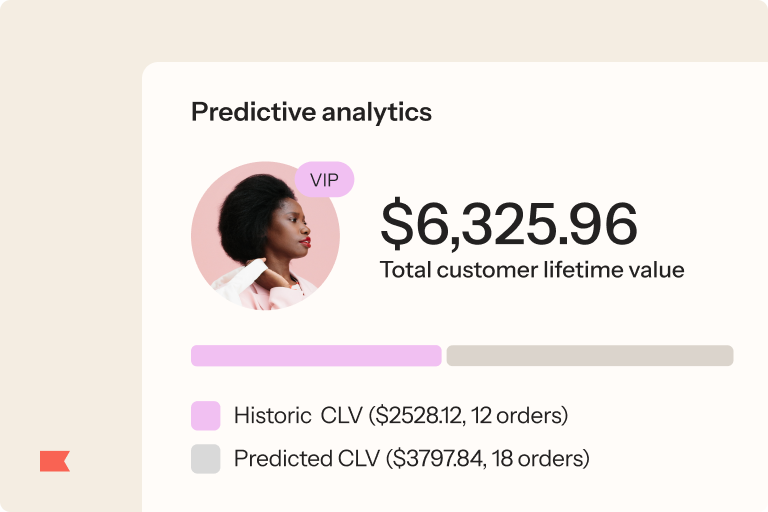Digitally native vertical brands (DNVB): everything you should know

With the explosion of powerful (and affordable) ecommerce platforms like Shopify and BigCommerce…
Many entrepreneurs have launched highly successful brands online. But not all brands start out the same way and it can make a difference in how they approach marketing, operations, and more.
Find out more about what a digitally native vertical brand (DNVB) is, how this differs from direct-to-consumer (DTC), and why the tremendous growth in ecommerce isn’t changing anytime soon.
What is a digitally native vertical brand (DNVB)?
A digitally native vertical brand is a business established online and sells their products or services exclusively online. However, even though the DNVB model means the brand started by operating only through their online store, some have established physical pop-up shops, showrooms, and brick-and-mortar stores as a result of their brand recognition.
Vertically integrated brands control the product and customer experience from the factory to the consumer. DNVBs have gained popularity for their ability to connect directly with consumers, control their brand messaging, and create unique, customer-centric experiences.
When defining what a digitally native vertical brand is, it’s helpful to break it down into two parts: “Digitally Native” and “Vertical Brand.”
A digitally native business, quite simply, is a business that began by selling their product or services online. There are many businesses that fit this classification, including direct-to-consumer brands like Warby Parker, along with retailers like Amazon and Wayfair.
This is in contrast to other more traditional brands, like Walmart or Macy’s, that began as brick-and-mortar businesses and eventually expanded into having an online presence where consumers can buy products online and have them delivered to their door.
But just because a business is considered a DNVB doesn’t mean they don’t have a physical storefront today. Many digital native companies began online before opening up brick-and-mortar stores, such as Away Luggage.
A vertically integrated brand, on the other hand, controls the product and experience of what they sell from the factory all the way to the consumer. This allows for customization, much better quality control, better service and support, and allows the business to collect valuable information from the customer that can help to improve the experience and communicate with them in a more personalized way.
A brand that sells their product online through only a retailer like Nordstrom or a marketplace like Amazon would not be considered vertically integrated, as they don’t control the entire experience. A brand that designs their own products and sells them through their own website or brick-and-mortar location would be considered vertically integrated.
Therefore, a digitally native vertical brand is simply a brand that started online and controls their entire customer experience from the factory to consumer. Some businesses can be digitally native but not be vertically integrated, while others can be not digitally native but be vertically integrated.
What are the differences between DNVB vs. DTC?
DNVBs are businesses that began online that control the entire customer experience from the factory to the customers’ hands. DTC, on the other hand, is the method of how the business sells—directly to the consumer and bypasses retailers and wholesalers.
By definition, all DNVB brands are also DTC brands because they sell directly to the consumer and control the whole process from end to end. But not all DTC brands are digitally native vertical brands.
For example, some brands like Nike sell direct-to-consumer through their brick-and-mortar stores and their website, but they’re not vertically integrated because they also sell through retailers like Foot Locker, and they’re not digitally native because they started selling before the internet even existed!
DTC describes the distribution method, which can be either online or offline, whereas DNVB describes the business model.
Basics of business to consumer (B2C) marketing that helps brands grow
What are the benefits of digitally native brands?
Similar to selling DTC, selling as a DNVB has many benefits.
Because the brand controls the entire customer experience, they’re able to typically provide much better service and support to their customers.
By cutting out the middleman, they’re able to keep supply chain costs down for their consumers and learn much more about their behavior when they buy, both from the information the customers provide as well as their actions (website engagement, how frequently they purchase, etc.).
DNVBs are also able to effectively communicate with their customers in a personalized way through owned and organic channels such as email, SMS, and social media.
This “maniacal focus on the user experience,” as the founder of Bonobos puts it, allows brands to build much more customer loyalty than if they sold through a retailer where a consumer would have a multitude of options to choose from.
Lastly, due to the rise of ecommerce platforms, anyone can get an ecommerce store set up to sell their products in a matter of hours for very little start-up capital. This allows the brand to spend more time building customer relationships, perfecting their product, and creating a consistent brand experience and less time managing the technical aspects of the website.
Ecommerce marketing automation platform for SMS and Email marketing channels
Grow your ecommerce business by innovating
We’re still in the very early stages of DNVBs. As ecommerce continues to grow and more people begin going online first for the items they’re looking for, as opposed to going to brick-and-mortar by default, the growth of DNVBs will continue to accelerate at a rapid pace.
The coronavirus pandemic has led to an entirely new target audience of people who are now becoming more comfortable with purchasing from brands online, many of whom will continue to shop online even after the pandemic ends after seeing the ease of use and quality of services and products they can purchase online.
Digitally native vertical brand FAQs
What is an example of a digitally native vertical brand?
The top 5 most widely-known examples of digitally native brands are:
1. Warby Parker
2. Dollar Shave Club
3. Bonobos
4. Glossier
5. Casper
What is the difference between DNVB and an ecommerce company?
A digitally native vertical brand is a subcategory of ecommerce brands. DNVB model means having complete control over the production, distribution, and marketing strategies and processes.
What are the pros and cons of digitally native brands?
By establishing a DNVB, you get control over the entire customer journey, and by establishing direct communication channels, you can ensure an improved, personalized customer experience. You can expect to see long-term values regarding lower business costs and higher margins. On the other hand, investing heavily in personalization can result in higher production costs. Furthermore, while lower prices can generate more ecommerce sales, these might not be able to generate a satisfactory ROI, ultimately resulting in financial losses.

Related content

Post-purchase experiences are where customer loyalty begins. Learn how to automate and personalize them to grow your B2C brand

Discover how lifecycle marketing transforms your CRM into a growth engine, driving retention, automation, and personalized B2C customer experiences.

Discover 5 tips for managing Black Friday customer service. From AI agents to unified data, see how Klaviyo helps brands turn support into a revenue driver.